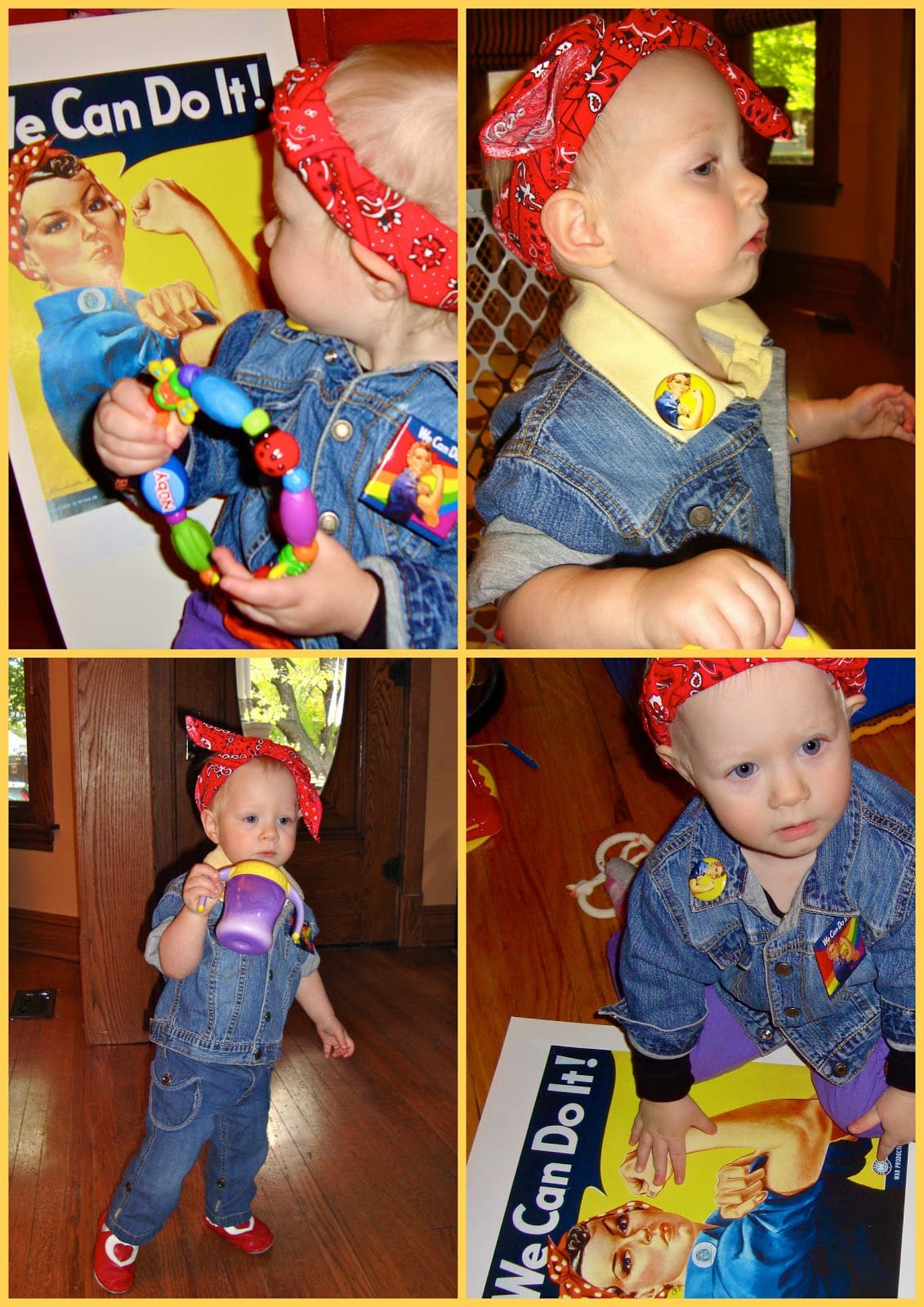This guide provides everything you need to know to achieve the iconic Rosie the Riveter look, whether you’re aiming for historical accuracy or a modern interpretation. We’ll explore the history behind the look, offer DIY instructions, suggest shopping resources, and delve into the symbol’s complex legacy.
Decoding Rosie’s Denim: The Riveter’s Workwear
The original Rosie the Riveter outfit prioritized practicality. A sturdy denim or chambray shirt, paired with high-waisted pants or overalls in dark colors like navy or brown, formed the foundation of the look. The instantly recognizable red bandana with white polka dots served the dual purpose of keeping hair out of the way and adding a splash of color. Sturdy work boots completed the ensemble, reflecting the demanding nature of wartime factory work. Discover everything you need to know about the acclaimed journalist and author, Peter Hitchens.
The Classic Rosie Look: Core Components
- Denim or Chambray Shirt: Durable and functional
- High-Waisted Bottoms: Pants or overalls in dark washes like indigo or navy.
- Red and White Polka Dot Bandana: A practical and symbolic accessory.
- Sturdy Work Boots: Essential for safety and symbolic of stepping into traditionally male roles.
Modern Rosie: Contemporary Twists
Today, the Rosie look transcends its historical origins, inspiring various modern interpretations. You can find dresses that echo the classic silhouette, jumpsuits offering a contemporary edge, denim skirts with a vintage vibe, and even casual footwear nodding to Rosie’s practical work boots. The core elements—denim, a touch of red, and a sense of empowered femininity—remain, allowing for individual expression. And dive into the iconic Rosie the Riveter outfit, a symbol of female empowerment.
Shopping for Rosie: Finding the Perfect Pieces
Whether you’re seeking a ready-made outfit or gathering inspiration for a DIY project, numerous options are available:
| Shopping Destination | What You Might Find |
|---|---|
| Etsy | Handmade and vintage-inspired dresses, accessories, bandanas, and full costumes for a personalized touch. |
| eBay | Vintage clothing, accessories, reproductions, and potentially authentic 1940s pieces. |
| Amazon | A wide selection of costume options, from basic kits to more elaborate ensembles. |
| Specialty Retailers | Vintage clothing stores and online boutiques specializing in 1940s fashion offer curated pieces for a truly authentic look. |
| Local Thrift Stores | Potential for uncovering unique vintage gems at bargain prices, offering a sustainable option. |
DIY Rosie: Crafting Your Own Ensemble
Creating a DIY Rosie the Riveter outfit can be a fun and rewarding experience:
1. The Bandana: Fold a red bandana with white polka dots into a triangle and tie it around your head.
2. The Clothes: Select a denim or chambray shirt and high-waisted jeans, trousers, or overalls. Darker washes stay true to the original style. Avoid distressed denim for historical accuracy.
3. Customization: Add personal touches like distressing, patches, or embroidery. A “We Can Do It!” slogan on the shirt pocket adds a subtle nod.
4. Hair and Makeup: Opt for practical hairstyles like rolls, updos, or pinned-back styles. Keep makeup minimal, emphasizing healthy skin.
More Than a Look: Rosie’s Symbolism and Legacy
Rosie the Riveter transcended fashion, becoming a potent symbol of female empowerment during World War II. Representing millions of women who entered the workforce, she challenged traditional gender roles and contributed significantly to the war effort. Her image continues to inspire, reminding us of women’s resilience and capacity to break barriers.
Rosie’s Enduring Impact: A Symbol of Empowerment
Rosie’s legacy endures, resonating in popular culture, feminist movements, and beyond. She embodies strength, determination, and the ability to challenge stereotypes. Some experts believe her image has evolved into a broader symbol of female empowerment, reflecting the ongoing fight for equal rights. There is ongoing debate about the various versions of “Rosie” and the evolution of her image, reminding us that history is constantly reinterpreted.
Unmasking Rosie: The Controversies and Complexities
Despite her widespread recognition, Rosie the Riveter’s image is not without controversy. Debates continue about her true identity, the meaning of the “We Can Do It!” poster, her post-war legacy, and the representation of women of color in her story.
The “Real” Rosie: A Composite Image
“Rosie the Riveter” wasn’t a single person, but rather a composite representing the millions of women who worked in wartime industries. Several real-life women have been suggested as possible inspirations, leading to ongoing discussions about who best embodies the icon.
The “We Can Do It!” Poster: A Case of Mistaken Identity?
The famous poster, often associated with Rosie, was originally created by J. Howard Miller for Westinghouse Electric as internal motivation for workers, primarily to discourage absenteeism and strikes. Its connection to Rosie emerged later, raising questions about the poster’s true intent.
Post-War Reality: A Complicated Legacy
While Rosie symbolized empowerment, many women were pressured back into domestic roles after the war. This has sparked debate about whether Rosie represents lasting progress for women or a temporary wartime exception.
Representation Matters: Where are the Other Rosies?
The dominant image of Rosie as a white woman often overlooks the crucial contributions of women of color during the war. This lack of diversity has prompted calls for a more inclusive narrative that acknowledges the experiences of all women who contributed to the war effort. Ongoing research continues to unearth these often-overlooked stories.
By understanding the multifaceted nature of Rosie the Riveter—her practical attire, symbolic power, and the controversies surrounding her image—we gain a richer appreciation for her impact on history and her continued relevance today.
- Unlock Water’s Symbolism: A Cross-Cultural Exploration - April 20, 2025
- Identify Black and White Snakes: Venomous or Harmless? - April 20, 2025
- Unlocking Potential: Origins High School’s NYC Story - April 20, 2025
















2 thoughts on “Rosie the Riveter Dress: A Comprehensive Guide to Achieving the Iconic Look (DIY & Ready-Made)”
Comments are closed.